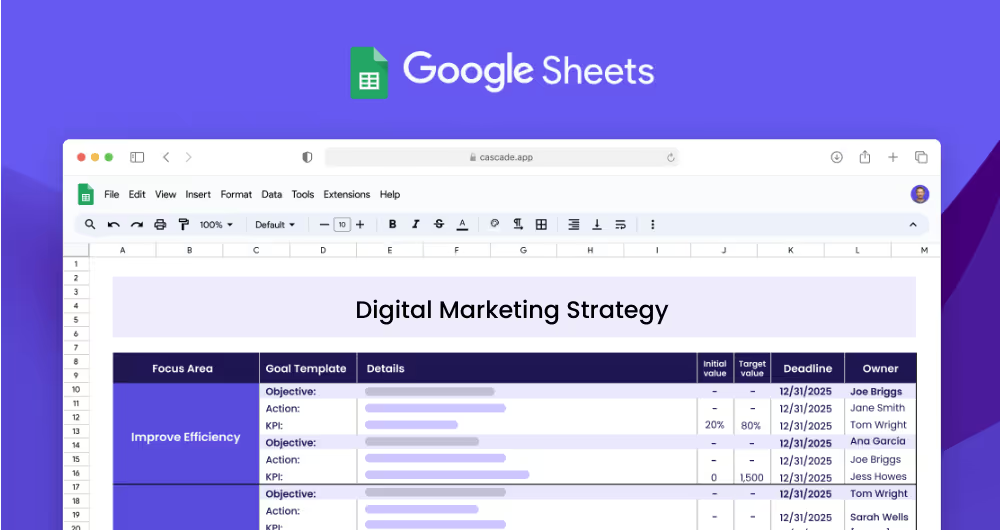A Digital Marketing Strategy is a plan or course of action directed at achieving set marketing goals. Goals are determined by what your business objectives are and in order of priority. After these goals are set, digital marketing campaigns are developed and executed to achieve them.
This template has been designed with a focus on the digitalization of business practices. Having a global online presence is incredibly important as more companies promote/ sell their products and services on the web or through social media. As such, this template digital marketing strategy is designed for retailers aiming to expand their presence virtually and businesses aiming to go global/ gain an international customer base. Some other professions that might find this template useful are digital content producers, web developers, social media managers, digital CRM analysts, e-commerce executives, public relation specialists, and user experience specialists.
Implementing this digital marketing strategy template requires a set of standard focus areas, projects, and measurable targets to be created. These are then used as a way in which organizations can track and measure their level of performance, productivity, and how effective their marketing strategy really is.
Many organizations start with a brainstorming process whereby they begin by listing down a range of questions revolving around who their target market is and what they are trying to achieve by implementing such a strategy.
This process is useful in identifying the key area which needs prioritization which in turn can become focus areas of the strategy. For example, the focus areas for a digital marketing strategy for a retail company like the iconic could be brand awareness, security, and risk for customer safety and website performance. Such focus areas can also be used as benchmarks to generate new goals and tasks for the future. For example, a retail store that establishes an online presence may want to take the next step and create an app for its market base.
A Strategic Objective is a way in which organizations can clearly outline what exactly they want to achieve, with a clearly stated deadline. The importance of an objective is to ensure it is a SMART goal that you and other members of your team can strive to accomplish. It is also important to note that it should be relevant to the focus area of choice.
An example objective that could fall under the focus area of security and risk: Develop long-term cybersecurity and prevention of data breach
A KPI is a key performance indicator that is measurable and evaluates the success rate of an organization in relation to the task at hand. KPI’s can be very specific to the industry is focused on.
An example of a KPI to achieve the above objectives is: Decrease Mean Time to Detect (MTTD) by 5 hours
From the above example, KPI's are assigned to respective objectives based on the end goal outcome. Check out a few examples of our Digital Marketing KPIs and their application to certain industries and scenarios.
Projects are ways in which the objective can be achieved, but more so, closely tie in with ways in which KPIs can be achieved. A project's main function is to achieve the measurable target. It is important when looking at the Digital Marketing strategy to clearly define a project that is of specific relevance and achievable in relation to the target trying to be reached.
Project example: Conduct a report on gaps & improvement of security in Public Cloud and Managed Private Cloud
The above project example can be used to achieve the MTTD KPI. Projects are usually time-bound too.
To transcend the limitations of spreadsheets and accelerate your strategy execution, consider switching to Cascade Strategy Execution Software. Experience the benefits of real-time updates, centralized collaboration, and automated reporting that enhances team alignment and speeds up progress. Unlike spreadsheets, which quickly become unmanageable as projects scale, Cascade offers an integrated platform with visual dashboards that provide clear insights into your strategy's performance at a glance. Sign-up for free or book a demo with one of our strategy experts today and see how you can achieve your goals faster and more effectively with Cascade.


